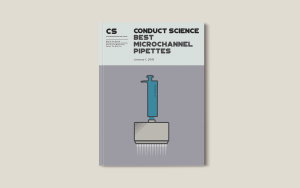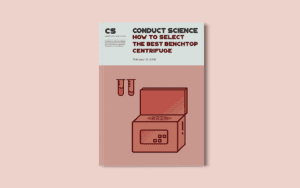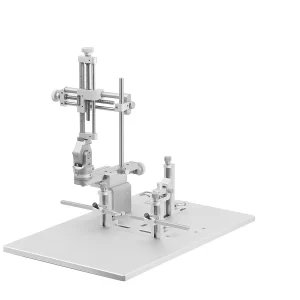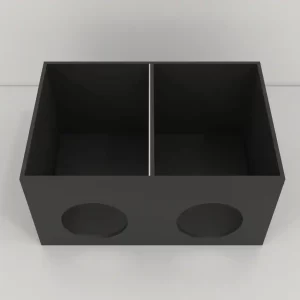
Best Microchannel Pipettes: A Comprehensive Guide
Introduction Pipetting, at first glance, would seem a fairly simple and easy task. Essentially described as glass or plastic tubes used to measure and transfer

The rise of the internet and subsequently, social media, has had many implications for society. The internet has changed the way academia works and how research is done. Social media specifically, has changed the way we interact and connect with people.
It is important to understand exactly what social media is, so it is operationally defined as the compilation of electronic platforms allowing for the creation, curation, and exchange of information in multiple formats (text, video, images, forums) and with varying degrees of connectedness, privacy, and accessibility (Van Dijck, 2013).
Social media platforms have become one of the best tools for marketing campaigns. When it comes to academics, social media can be a powerful mechanism for showcasing work, when used correctly.
That said, understanding an academic portfolio and how it works on social media is one of the keys to a successful online portfolio. An academic portfolio is a thoughtful, organized, and selective collection of documents that illustrate what you’ve accomplished in terms of research, teaching, and service.
Twitter is increasingly becoming the most popular platform for science communication. Thus, for the purpose of this article, Twitter will be used for all examples (unless otherwise stated) because of its unique ability to work as an Online Portfolio in Academia.
Academics in scientific disciplines know that effective communication of their work is critical when publishing research. Social media is a way that researchers can connect with other scientists, journalists, and directly with the general public to communicate updates in their research and ultimately their findings and conclusions. Using a platform like Twitter, not only connects you with others, but it can create a timeline of research that anyone can follow.
Creating an account and posting research findings or research developments is a way to engage with the people that care about what is being studied – people can follow along on the research journey. For example, if you are engaging in fieldwork, posting about what you are doing and where you are doing it, connects you with people in the area or those that care about the area/work being done. This sharing, in turn, might provide opportunities for further research communication, citizen science projects, and potentially, sources of funding.
While connecting with your followers is made much easier via social media, the platforms also give the opportunity for you to connect with other people who might not know about your research. With the use of hashtags and direct tagging it is easy to grow a following using social media.
Typically, a portfolio contains the scientist’s educational philosophy, details of their activities (both in the lab and in the field), documentation of quality, description of the impact, and evidence of self-critique (Glassick, 2000). All of this can be implemented in a social media account.
Within your social media platform, you can include a description of your scholarly work – most often generally explained in your “bio” (description of yourself featured in your social media profile). After you create posts (for example, tweets), all of your published work can be found easily on your timeline. If you include a specific hashtag (for example #workpublished) on all of your posts about publishing research, you can easily search your timeline for those specific posts in later years.
Here is a list of guidelines for creating an Online Portfolio on social media (summary provided by Cabrera et al. (2017)):
Keep in mind that after you have a portfolio and want to submit it to an institution when applying for funding, for example, it is important to share which specific platforms you use, especially if you use more than one. Other important guidelines when submitting a portfolio to an institution or governing body include:
For almost every academic institution, knowledge dissemination and impact are essential criteria used for promotion. With typical measurement tactics, it can be difficult to completely understand the impact of a researcher’s work. For example, highly cited publications obviously have a greater impact, but even highly cited, retracted publications can have a high level of effect even if their merit has been discredited. Social media metrics can show the level of impact (based on likes, page views, etc), and depending on the platform you are using, it can show how people react to a post (negatively vs positively).
Another important aspect of measuring success is real-time metrics such as page views and sharing. These types of metrics can be more easily collected using social media compared to typical journal-based methods. Social media platforms provide easy-to-understand metrics for every post you make, such as the number of views the post has and the number of people who “liked” it, shared it, and commented on it.
These metrics are referred to as “altmetrics” and are quickly being used in the academic world to evaluate researchers. Not only are these metrics able to quantify real-time measurements of impact, but they are able to communicate the public engagement as well – which is increasingly important in academia.
One major advantage of using social media in academics is the ability to properly quantify and measure the success of research work.
Before social media platforms were used so actively, the activities of academic scientists have been hard to quantify. Historically, the success of a paper was determined by the number of people citing the work. While this informs researchers on the number of people who are using the work as a reference for other scientific research and the number of people who write about it, it excludes a massive amount of people.
People who choose to read research because it interests them, not because they are journalists or scientists, are part of a demographic that wasn’t able to be quantified until social media metrics. The success of a paper shouldn’t be based solely on how many people cite the work, but on how many people connect to it and share it.
One major disadvantage of social media is the need to be concise and exciting. If you are trying to reach a wide audience, not everyone is going to be immediately drawn into your post from the title of your published paper. You need to have excellent communication skills and be able to stand out in a world of information overload.
You also have to be open to negative feedback and opinions. Social media is a platform where people express their true selves and views. It is much easier for someone to argue about something on social media compared to a live discussion. While feedback is most helpful in research, if your work is controversial, you need to expect some pushback that is not constructive.
More and more institutions are using social media metrics and portfolios to determine the success of a researcher. It is time for the world of scientific research in academia to join the world of social media and share the excitement of what is being worked on. The world is constantly changing, academia should be as well.

Introduction Pipetting, at first glance, would seem a fairly simple and easy task. Essentially described as glass or plastic tubes used to measure and transfer

Resource Identification Initiative: A Key to Scientific Success and Analytics The key to success can be found in the essential principles of the Resource Identification

INTRODUCTION AND BRIEF HISTORY One of the most important pieces of equipment in the laboratory is the centrifuge, which facilitates the separation of samples of

INTRODUCTION AND BRIEF HISTORY One of the most important pieces of equipment in the laboratory is the centrifuge, which facilitates the separation of samples of






DISCLAIMER: ConductScience and affiliate products are NOT designed for human consumption, testing, or clinical utilization. They are designed for pre-clinical utilization only. Customers purchasing apparatus for the purposes of scientific research or veterinary care affirm adherence to applicable regulatory bodies for the country in which their research or care is conducted.